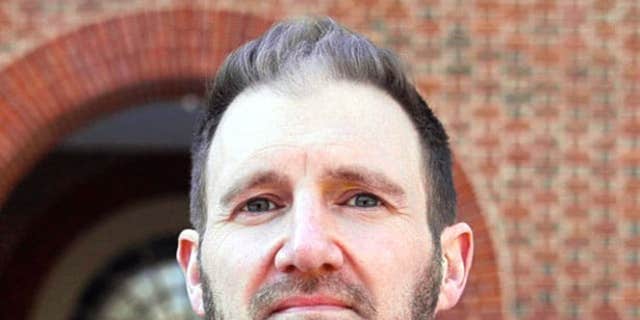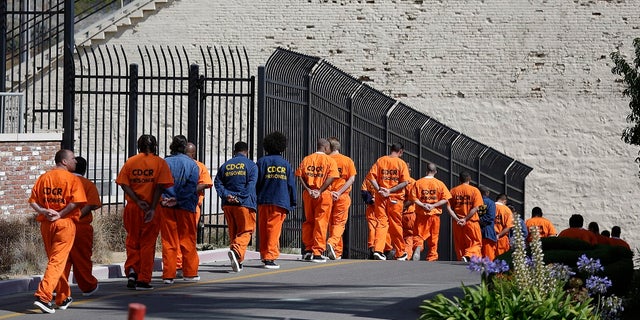Following the attack on Rep. Lee Zeldin, R-N.Y., on “Fox News Live,” Suffolk County PBA Vice President Lou Civello calls on elected officials to repeal New York’s bail reform.
NEW Fox News articles can now be heard on audio! Prisons are frequently promoted as a deterrent to crime, yet confinement without rehabilitation also contributes to criminality. It’s time to go inside jails and rethink their potential because violence is permeating cities. I had firsthand experience with what didn’t work while serving time for bank robbery. After twenty years, the jail system has undergone changes, including as sentencing reform and improved access to in-prison programming, yet satisfactory results are still elusive.

The fact that the jail environment has a direct impact on public safety cannot be denied any more. (iStock)
The purpose of prisons was not rehabilitation. We cannot expect them to convert into good citizens when the negative prison culture undermines moral development. It’s time to change the way America “does” incarceration. The most important number in American corrections for a long time has been recidivism, or the rate at which released inmates return to state custody. However, it assesses failure rather than success. The jail system continues to emphasize recidivism despite recent data challenging this notion. Researchers have discovered risk factors for recidivism that should be reduced, such as antisocial thoughts and behavior. Officials are now working to offer programming that addresses criminogenic elements and is evidence-based.

Former bank robber Jesse Wiese is now a vice president of program design and evaluation at Prison Fellowship in addition to being an attorney.
These therapeutic initiatives are admirable, but they are not enough. Despite decades of efforts to lower risk factors, recidivism rates have remained high. Sixty two percent of those released from state jails are arrested again within three years, according to the Bureau of Justice Statistics.
What else needs to be altered?
The risk-reduction strategy ignores the fact that the unfavorable jail climate has a greater impact than any one program.
According to research, the very act of working in prison endangers the safety and wellbeing of correctional officials. However, there are no standards for evaluating all prisons. The more important question, “What makes a good prison,” has gone unasked while efforts have been made to establish a decent prison program. A culture that supports moral learning should surround and encourage prison programs that develop ethical citizens. According to research, learning thrives in settings marked by openness and trust, positive role models, and lots of opportunities to put what is learned into practice. The usual prison setting, however, provides the opposite. Role models are hard to come by, learning chances are few, and trust and transparency can make inmates easy prey for less morally upright inmates.
A prison system that exclusively tracks recidivism is analogous to a medical facility that only tracks mortality. (iStock))
When the behaviors taught in the classroom collide with the social norms of the jail, we cannot expect people to become decent citizens. The fact that the jail environment has a direct impact on public safety cannot be denied any more. A prison system that solely tracks recidivism is analogous to a medical facility that only tracks fatalities. Recidivism and risk reduction cannot tell us whether or not prisoners are released with the skills necessary to succeed as law-abiding citizens. It’s time to put more of an emphasis on acquiring or improving positive, prosocial characteristics of good citizenship.
At Prison Fellowship, we don’t just want people to steer clear of going back to jail. We want people to work, pay taxes, provide for their families, give back to their communities, and volunteer. In and outside of prison, we want people to prosper as moral citizens. Our jails and communities will be safer the more prison culture promotes prosocial norms and good citizenship principles.

At San Quentin State Prison in San Quentin, California, on August 16, 2016, inmates line up. (AP Photo/File: Eric Risberg)
This is not just a fantasy. To make it happen, however, we must begin tracking our progress in the areas of community, affirmation, productivity, accountability, restoration, and integrity as well as our weaknesses in these areas. We need to find and reinforce what deters people from committing crimes in the first place rather than asking why people commit crimes. The Prison Fellowship Academy, a distinctive in-prison community regulated by these ideals, provided me with role models and opportunity to put new behaviors into practice during my personal change from prisoner to advocate. Change that would stick happened, and not just for me. I still keep in touch with other men who are now business owners, pastors, husbands, fathers, community leaders, and activists.







